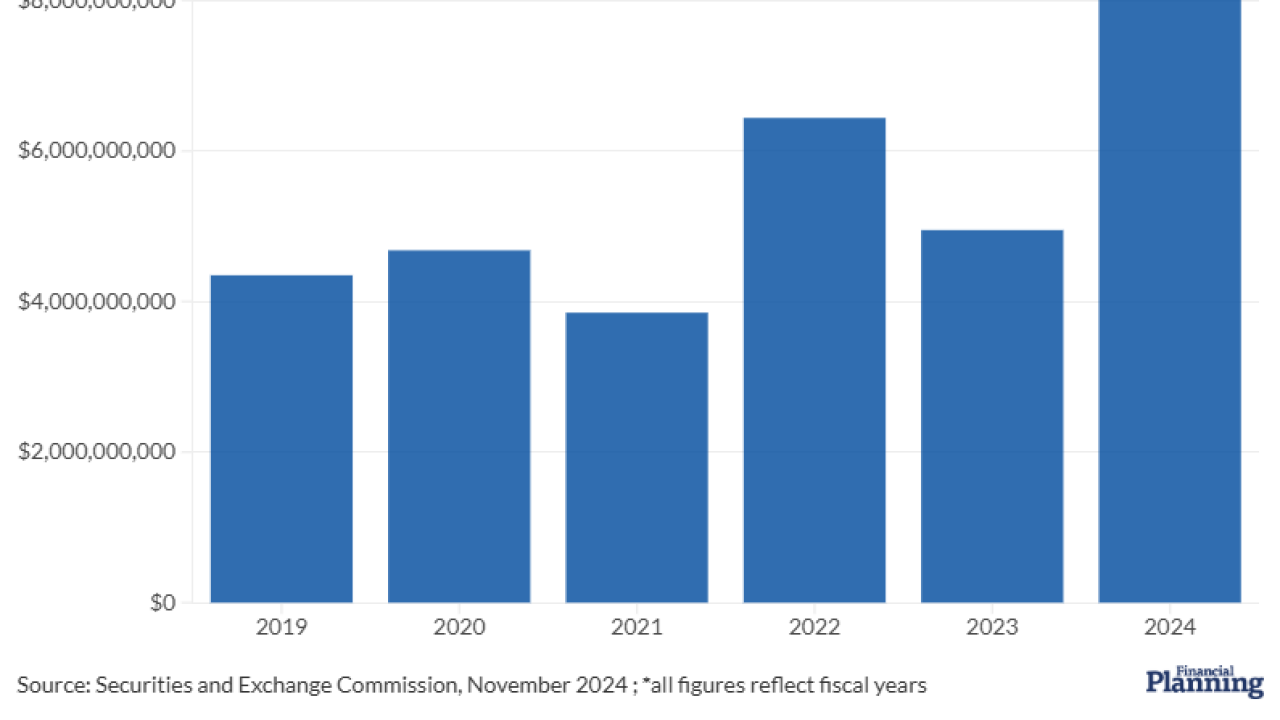After several years of a steady increase in the number of consumers working with financial advisors, the rise of digital, “free” do-it-yourself trading apps over the past 16 months may be starting to reverse the trend.
Engagement with a traditional advisor has fallen 4.3% among U.S. investors in 2021, according to research from Parameter Insights. For investors who use an online brokerage, the presence of a financial advisor fell 11%.
Meanwhile, the use of self-directed investing continues to increase.
First-time investors feel more empowered than ever to manage finances on their own with a wide selection of easily accessible and affordable trading apps, while consumers already working with an advisor are using online brokerages to test the value of professional investment management, says Parameter founder and CEO Josh Book. Taken together, these behavior shifts could suggest a coming change in the role of financial advisors.
“There are a lot of alternatives out there … It’s pretty easy to build a portfolio with a couple of ETFs,” Book says. While it’s too early to tell what this means long-term, it’s a sign that firms need to get serious about how they are digitally engaging with retail investors, he adds. “The sophistication of the online brokerage experience is only getting better, and happening more rapidly than the traditional advisory channels are modernizing to create more perceived value for increasingly tech savvy, digitally comfortable cohorts of customers.”
-
Most young and mass market clients still turn to traditional firms, but a shift toward app-based accounts is under way, according to Broadridge data.
April 30 -
The margin requirements apply to Merrill Lynch wealth management clients and individual traders using the Merrill Edge platform.
January 29 -
Investors with an advisor were more than twice as likely to say that they are very confident that they have the best investment strategy, a survey found.
January 25
Discount brokerages and new startups aren’t the only ones putting pressure on traditional wealth management. Citigroup became the latest to enter the fray in July with
“There are firms doing a really good job at thinking about on-ramps and off-ramps between consumer channels,” Book says. “There is still so much that is siloed, particularly among the full-service firms, but the better they get at understanding their customers, the better they’ll do at helping those folks into the most appropriate channel.”
Refinitv, a financial markets data and infrastructure provider that has been
Active Investor uses HTML5 to integrate with a firm’s current digital infrastructure, meaning self-directed trading can be offered alongside brokerage capabilities and use existing order management systems for trade execution, says Charles Smith, head of digital solutions for Refinitiv’s wealth management team. Active Investor can include Refinitv’s data and analysis to cater to more sophisticated investors, and be customizable to offer a simplified version to newcomers, he says.
While he wouldn’t provide specific names, Refinitiv is in the process of rolling out self-directed investing to two firms and is in conversations with several others, Smith adds
“Clients want to manage some of their investments themselves, and this gives them a channel in which to do that,” Smith says. “[Advisors are] probably missing out on some of those clients or those dollars that are going to some of those other channels.”
Keeping those self-directed assets in-house can have other benefits, such as giving advisors insight into how clients trade and offering them more opportunities for advice. And by using the firm’s existing brokerage, custody and clearing infrastructure, moving money is easier, Smith says.
“If you really want to be a one-stop-shop for your wealth management clients, having a self-directed channel is really the way to go,” he says.
Despite the rise of consumer demand for self-directed trading, Smith doesn’t agree that the need for advice is decreasing. Advisors still have a role to play; it’s just continuing to shift even further away from investment management and more towards the idea of “holistic financial wellness.”
“It’s not about what I should buy and sell, it’s about how I manage my whole financial lifecycle,” he says.






